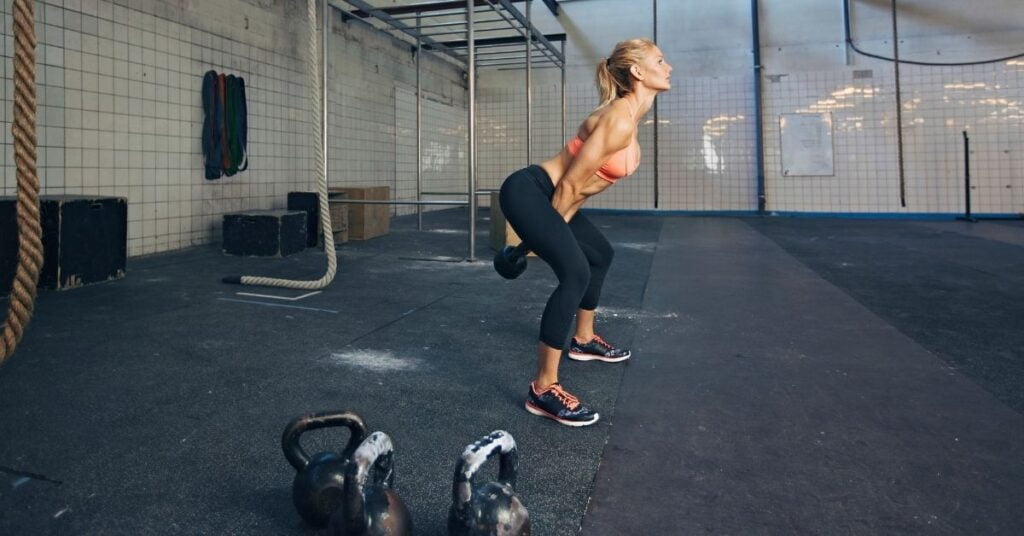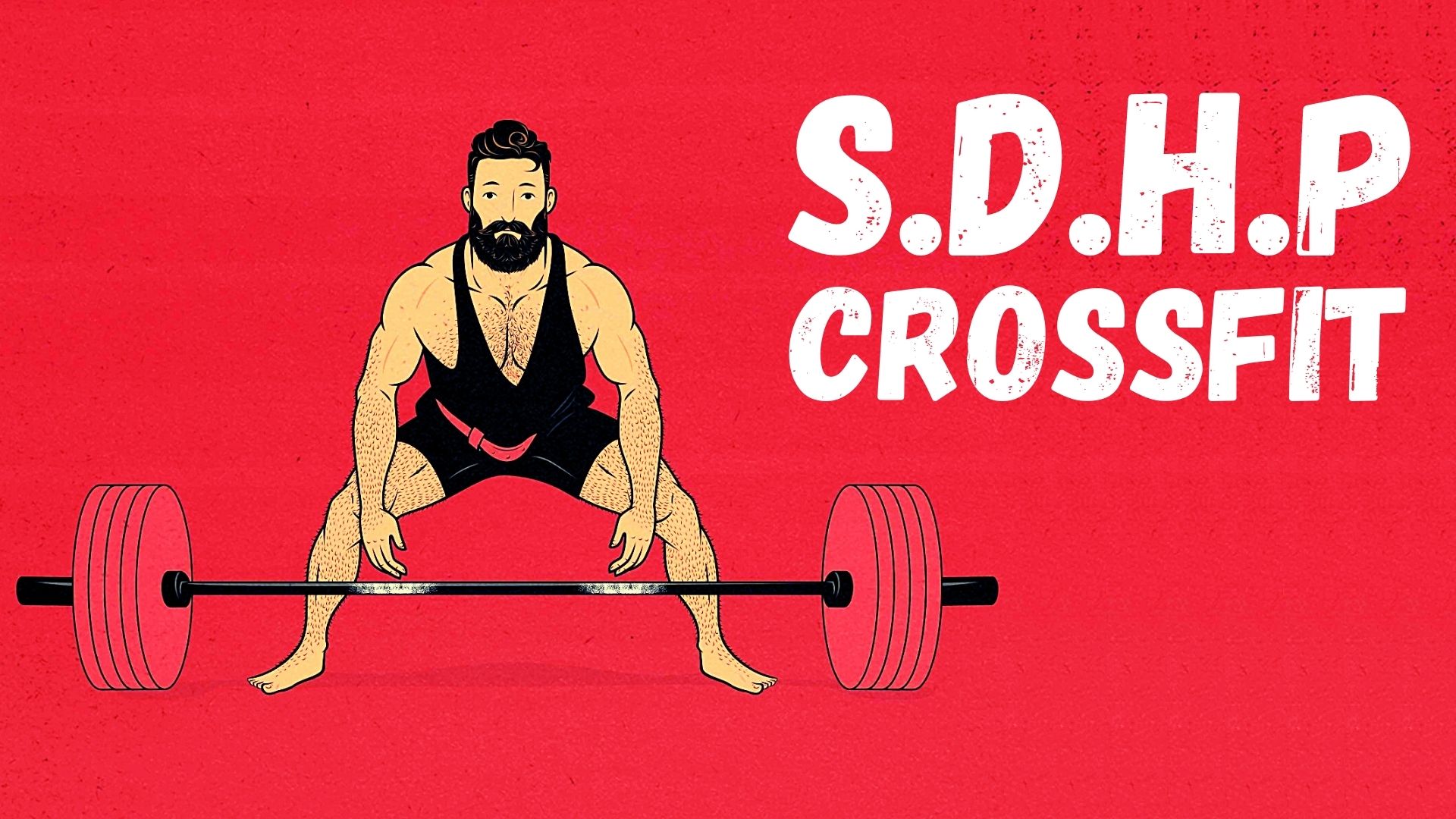
Helen WOD: The Crossfit Challenge You Need to Try!
The Helen WOD is a classic CrossFit exercise that combines running, kettlebell swings, and good old-fashioned kipping pull-ups into a short(ish), but demanding, metabolic conditioning session.
Before the Helen WOD, just seven CrossFit lady exercises had been produced, making the workout nearly as ancient as the sport itself.
The Helen WOD is a bit of a devil in disguise, with small weights and low reps.
Here’s how to achieve a high score on Helen WOD while not letting her defeat you.
What Exactly Is The Helen WOD?
The Helen WOD was one of the first Crossfit Girl workouts.
A 400-meter run, 21 kettlebell swings (50/35lb), and 12 pull-ups must be completed in time.
Helen WOD is a Crossfit benchmark workout that is used to track an athlete’s growth over time.
The exercise consists of three actions that are very easy to perform: a run, kettlebell swings, and pull-ups.
The Helen WOD, on the other hand, is designed to be a moderate sprint, making it a test of speed as well as endurance and strength.
You must carefully pace the runs so that you do not exhaust yourself on the kettlebell swings and pull-ups.
Elite CrossFit athletes can finish the workout in under 7 minutes.
All three motions have scaling possibilities.
Typically, the run should not be scaled; but, if you are having difficulty running, you can shorten it or replace it with a row.
Lower the weight for kettlebell swings to a level that permits you to complete 21 repetitions without stopping.
There are various alternatives for pull-ups, including banded pull-ups, leaping pull-ups, and ring row.
Helen WOD Strategy

A good Helen WOD score is determined by three factors: breathing, transitions, and grip.
To be honest, your objective should be to go uninterrupted on everything. Maybe not today, but someday.
Helen WOD is written in such a manner that it nearly “dares” you to go too far.
Lighter weights, faster transitions between activities, and no need for a high number of reps.
On paper, it appears to be a workout that makes you say, “Wait, that’s not so awful.”
Then you’re on round three, your grip is shot, and you can’t catch your breath.
Round three takes almost as long as rounds one and two combined.
Helen WOD is victorious when this occurs.
There is no “real” time to recover your breath if you go all out on Helen WOD, which you should.
Still, if there is a moment to manage your breathing, it is during the run.
Try to keep your heart rate down here.
A 3-5 second slower 400m run might mean the difference between you losing your grip on the final set of pull-ups and losing time in the long run.
Cut the reps in half if you can’t go unbroken on the swings and pull-ups.
Go 11-10 and 6-6, then take a deep breath and wait to go again.
Exhale forcefully after each kettlebell push and inhale deeply as the bell returns to its original position.
It’s difficult to hold your breath on the pull-up (dobutterfly kipping pull-ups, by the way), but the more you concentrate on it, the more you’ll have in the tank to go all out on round 3.
Helen WOD Scoring
The Helen WOD’s purpose is to finish as quickly as possible.
While 7 minutes is certainly out of the question, a score of 9-12 minutes is doable on your first try.
How to Perform the Helen WOD

Helen WOD gets graded “for time,” which implies she finished the workout as swiftly as she could.
Kettlebell, pull-up bar or rig, and room to run 400 meters are required.
Helen WOD is an advanced exercise, but there are lots of scaling alternatives for beginners.
Instructions of Helen WOD

Want to have your greatest Helen WOD time ever (or simply demolish it on your first try)?
Use these pointers and step-by-step instructions.
Running Instruction
The 400-meter run at the start of each round may either assist or hinder you depending on your skills and shortcomings.
Use the run as an active rest time if you’re stronger than you are quick (or conditioned).
That is, you should run hard enough to raise your heart rate, but not so hard that you can’t immediately switch to kettlebell swings when you finish.
Use the run to challenge yourself if you’re a terrific runner—especially if you’re much better at running than the other two exercises in Helen WOD.
If you struggle with pull-ups or kettlebell swings, the 400-meter run is your chance to improve.
Kettlebell Swings: A Step-by-Step Guide
Lifting a kettlebell weight from the floor to above in one fluid, sweeping motion is what the kettlebell swing entails.
Here’s how to go about it.
- Stand with your feet shoulder-width apart and the kettlebell between them, slightly in front of your torso. Bend over and take both hands on the kettlebell. Your palms should be towards you, and your spine should be in a neutral position.
- Before beginning the workout, brace your core and maintain “active shoulders.” When you have active shoulders, you keep your lats engaged, bringing your shoulder blades back and down. At the apex of the action, keep your hips just beneath your shoulders.
- Lift the kettlebell off the ground and swing it back and forth between your legs. Your knees will bend slightly, as if you were doing a quarter-squat. Maintain a neutral spine and active shoulders!
- Squeeze your glutes to assist you remember to drive your hips forward until they’re completely stretched. Don’t use your arms just yet; the kettlebell should not go higher than your shoulders.
- When your hips are completely extended, use your momentum and upper body strength to lift the kettlebell above. Full extension should be achieved with locked-out elbows and a firm core (do not hyperextend your back).
- Return the kettlebell to its starting position slowly and steadily. Dropping the kettlebell from above is not permitted.
Kipping Pull-Ups: A Step-by-Step Guide
Kipping pull-ups are a highly sophisticated CrossFit workout, albeit the kip originated in gymnastics.
The kip is a full-body action that athletes employ to generate momentum, which allows them to either A) accomplish more reps or B) propel themselves in ways they couldn’t before.
The kipping pull-up requires more coordination and timing than strength: While hung in the air, you must be able to move your body over a wide range of motion.
A kipping pull-up is performed as follows:
- Set up: Jump up from below the pull-up bar and grab the bar. Your hands should be outside your shoulders, and your arms should form a “V.”
- Begin the kip by getting into a tight, “hollow” stance and pushing your arms down and away from the bar. Consider this exercise to be a straight-arm lat pulldown on a cable machine. Maintain a wide range of motion in your hips while keeping your lats and core firm.
- Move into the arch: Your body will begin to return to the beginning position at the top of the hollow posture. Extend your back and shoulders to push your body past this posture. In a good arch, your head should be in front of the bar, while your legs and feet should be behind it.
- Complete the kip: Once you’ve reached the arch position, push down and away again, but this time firmly drive your hips upwards (similar to a glute bridge on the floor) and utilize that momentum to draw your body up to the bar.
- You should be close to completing the pull-up at this time if you haven’t yet bent your elbows. Do the following right now: To get your chin above the bar, use your upper body strength. Your elbows should be towards the floor, and your lats should be taut.
- To start another pull-up, descend into the hollow position by pulling your body away from the bar, then repeat the steps.
Benefits Of Helen WOD
Helen WOD may be a perplexing workout in terms of stimuli because to its various motions.
Some athletes consider it a sprint, while others consider it a rapid but moderate effort.
You can get these benefits regardless of how you look at it.
Speed
A quick 400-meter run is required for an excellent Helen WOD score.
Anywhere from 90 seconds to two minutes is OK, and Helen WOD will put you through three periods with minimal respite in between.
Endurance
Going from a quarter-mile run to a weightlifting movement, a gymnastics activity, and back to a quarter-mile run is not easy.
Helen WOD will put your cardiovascular and muscular endurance to the test.
Helen WOD rewards the most well-rounded athletes with the highest marks.
Upper Body Power
Kipping pull-ups and kettlebell swings are both full-body exercises, but they put the most strain on your upper body.
Expect to feel tiredness in your biceps, shoulders, traps, lats, and upper back after Helen.
Common Mistakes Of Helen WOD
Every workout provides possibilities for errors, as well as opportunities to learn from them.
Whether you’ve made these errors previously or haven’t tried Helen yet, keep these pointers in mind for your next effort.
- When you’re on the run, you’re probably going too fast.
- Too many reps are being broken up.
- Mistakes in Kettlebell Swing
- Using the back rather than the legs
- Not completely stretching overhead
- Allowing the kettlebell to weigh you down
- Mistakes in Pull-Ups
- On the kip, you are not using the entire range of motion.
- Suicide grip
Precautions & Safety For Helen WOD
Certain precautions should be taken before beginning any training.
Think about these before trying Helen WOD.
Put On The Proper Shoes
You’ll run nearly a mile during Helen WOD (three 400-meter intervals).
For some, that isn’t enough to justify running shoes, but for others, particularly those with past ankle, leg, or hip problems, it is.
The most crucial thing is that you are comfortable during the workout.
Wear running shoes instead of CrossFit trainers if that is what you need to do.
Put On Grips Or Gloves
Keep your hands safe!
Kipping pull-ups are known for causing CrossFit competitors to “rip” a blister or callus forms and eventually rips, revealing fragile young skin beneath.
Ripping typically causes intense pain or a burn-like feeling.
Wear grips or gloves intended for CrossFit or gymnastics to avoid this.
Warm Up
Always warm up before Helen WOD, performing both a general and a targeted warm-up.
In addition to dynamic stretching, your general warm-up should include some type of modest cardiac activity, such as running or cycling.
Light kettlebell swings, kip swings, and other routines that will prepare your body for the workout should be included in your warm-up for Helen.
Eat And Stay Hydrated
You should not begin Helen WOD on an empty stomach.
Drink plenty of water throughout the day and fill up on healthy fats, complex carbs, and protein.
If you do Helen first thing in the morning, have a modest but powerful breakfast, such as a banana with nut butter.
After That, Take A Break
If you put in the necessary effort for a Girls WOD, you’ll most likely join other athletes in heaps on the floor after finishing Helen WOD.
When you’ve recovered sufficiently to move, make sure you shake away all the lactic acid buildup.
Finish with a 400-meter leisurely jog or walk, followed by foam rolling and static stretching.
Pay attention to your quadriceps, hip flexors, shoulders, and upper back.











